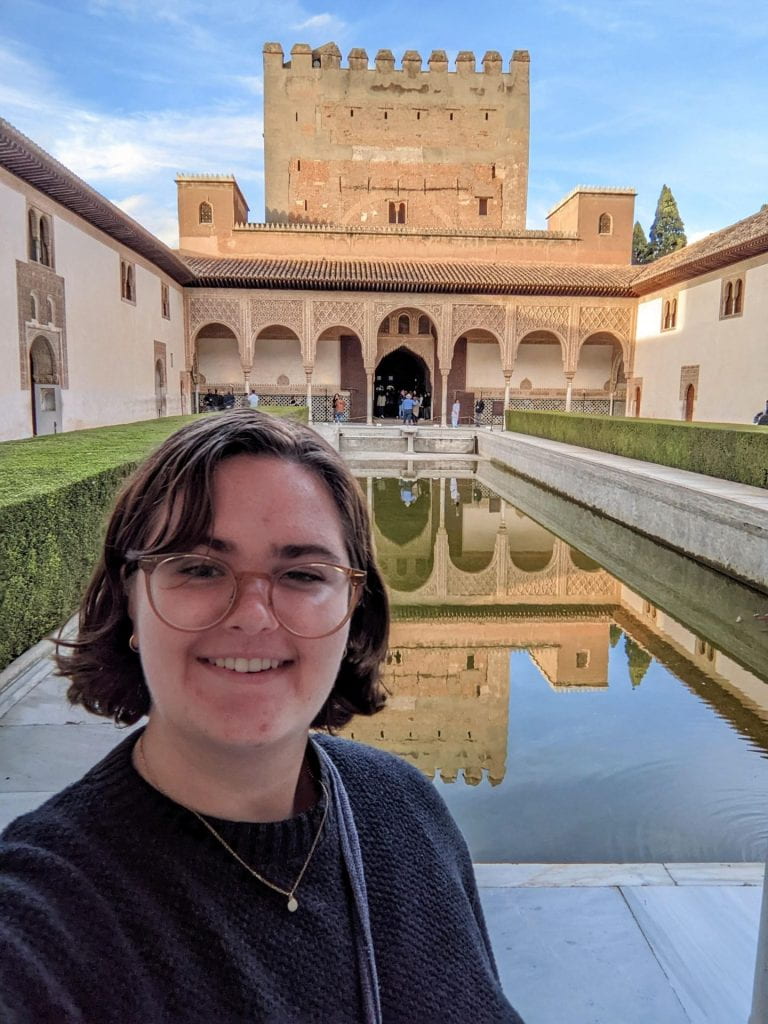
Submitted by Maxwell Poruban on the 2024 Spring semester program in Granada, Spain…
University course work, traveling internationally, and learning the little details of a culture that is apart from your own are all, on their own, daunting challenges. Thus the ultimate crash course for each of these is the first week of a semester abroad. For the next five months I will be living and studying in the city of Granada, in southern Spain. The last muslim city reconquered by the catholic royals Ferdinand and Isabella, situated thirty minutes from the Sierra Nevada, an hour from the Mediterranean, and surrounded by agriculture; Granada is truly a rich and vibrant site of Spanish cultural seity. This first week I have not only left the United States, but also begun my classes with the Granada Institute of International Studies at University of Granada’s Center for Modern languages, taken my first exam, and toured the Alhambra. Underlying this whirlwind of a week was the necessity of cultural and (attempted) idiomatic adaptation.
Spanish culture is vastly different from the United States in ways that I am beginning to learn. One of the best examples is the hours at which meals are eaten. In Granada, breakfast, usually quite small, is eaten shortly after waking and is not a staple of the Spanish diet. Lunch, the main meal of the day, is late, long, and large. Usually taken around three to four in the afternoon, it consists of a large meal which may be followed by lively table conversation and occasionally a nap. Finally, dinner, also smaller like breakfast, is late, usually between seven and nine in the evening. However these comparatively small changes are nothing next to the change in language. This first week, my greatest challenge has been forcing myself to read, write, speak, and dream in Spanish.
In the US I have never experienced looking, sounding, and acting like a foreigner; and while in Granada it has been challenging, it has also been a great learning experience. I feel uncomfortable not knowing the right way to ask questions or order a coffee or even say hello, not nearly as uncomfortable as I did on my first day. Of course this discomfort is one of the main reasons I wanted to study abroad in the first place. While studying abroad and continuing my studies in a beautiful country was a draw, I truly want to improve both my linguistic ability. That said, I am looking forward to learning how to blend in here in Granada, as well as taking classes and meeting new people. (January 13, 2024)













